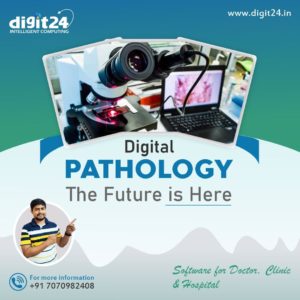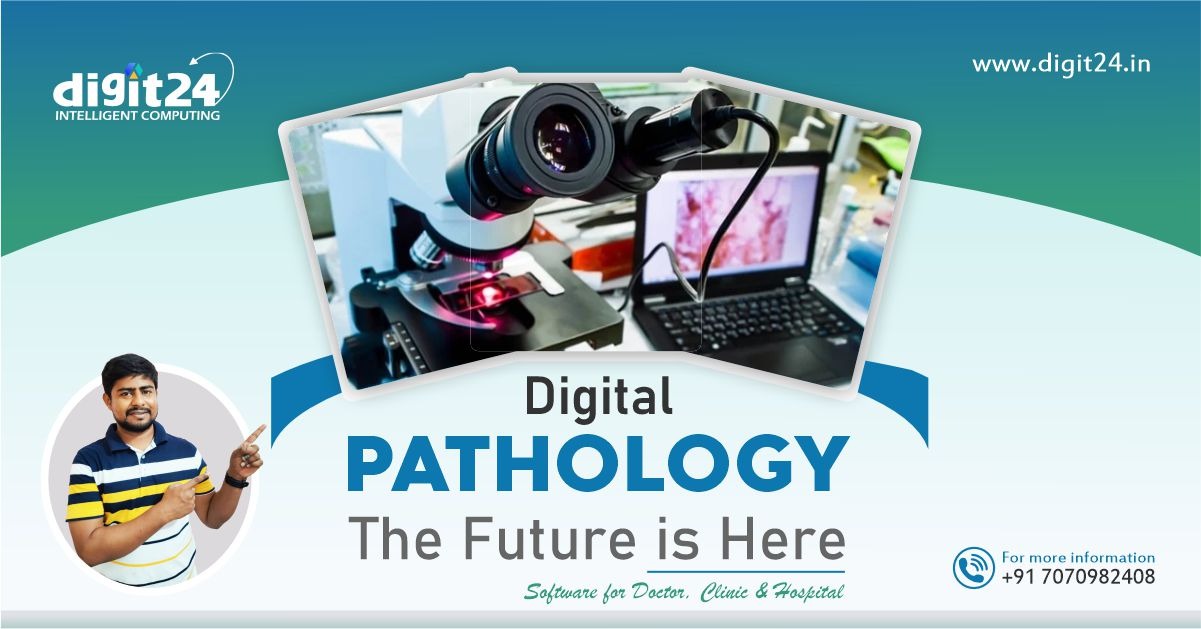What is Digital Pathology?
Most medical interventions involve some level of Pathology. Digital pathology is an application of imaging that allows a pathologist to work remotely. Detailed photography provides the pathologist with scans of samples.
The pathologist working remotely can then examine the image to determine whether the sample is benign or malignant. It can all be quick and accurate. A quick diagnosis means prompt treatment if necessary.
Before this technology, samples had to be taken, packed in biohazard boxes and shipped to a pathology lab or off-site.
The result of this new technology is a reduction in laboratory costs. Shipping is no longer required. A central laboratory can serve multiple physicians and patients remotely.

To Get Best Pathology Lab Management Software : CLICK HERE
Better Asset Atilization
The shortage of pathologists is repeated around the world. With expectations of better healthcare everywhere, a gap needs to be bridged. Digital pathology development is the timely answer to that need.
The future is likely to see greater use of pathology assets through the widespread introduction of new digital pathology methods. Sharing of images makes access to centralized pathology services viable. It also supports connecting specialist pathologists with on-the-ground physicians.
Increased Efficiency
There is pressure to improve efficiency in all medical services.
Digital pathology provides a means of improving the efficiency of pathology. It also provides efficiency improvements elsewhere. It is likely that the medical world would like to take advantage of these.
Digital slides can save doctors a lot of time. Takes less time on physical samples, shipping and reporting. Computerized imagery, search, analysis and records help in communication and collaboration.
Digital workflow
Workflow management is well developed in other industries and can be applied to digital pathology as well. It would be easier to capture the imagery and pass it on to the pathologist. It will be easy to return it to the diagnostic reporting physician.
Image resolution and data storage will improve. Better infrastructure will enable these developments.
Point-Of-Care Testing
As digital technologies become more sophisticated, it will put more power in the hands of the physician. The samples are likely to be captured, analyzed and diagnosed on the spot.
A handheld device that gives the doctor almost instant feedback can be a realistic part of the doctor’s equipment, as much as a stethoscope has been in the past.
Artificial Intelligence
Artificial intelligence is being seen as a source of major changes in the medical field. This is equally true for pathology. It is important for them to have sufficiently large data sets to train AIs for applications in pathology.
When the critical mass of data for AI and pathology is acquired, it will recognize cancer cells from the slide. This will free up rare disease specialists. They will be able to do more difficult tasks.
Transformative Technology
Digital pathology will be transformative for pathology and for medical services and research. The future of pathology is digital. New digital pathology methods will continue to emerge.

